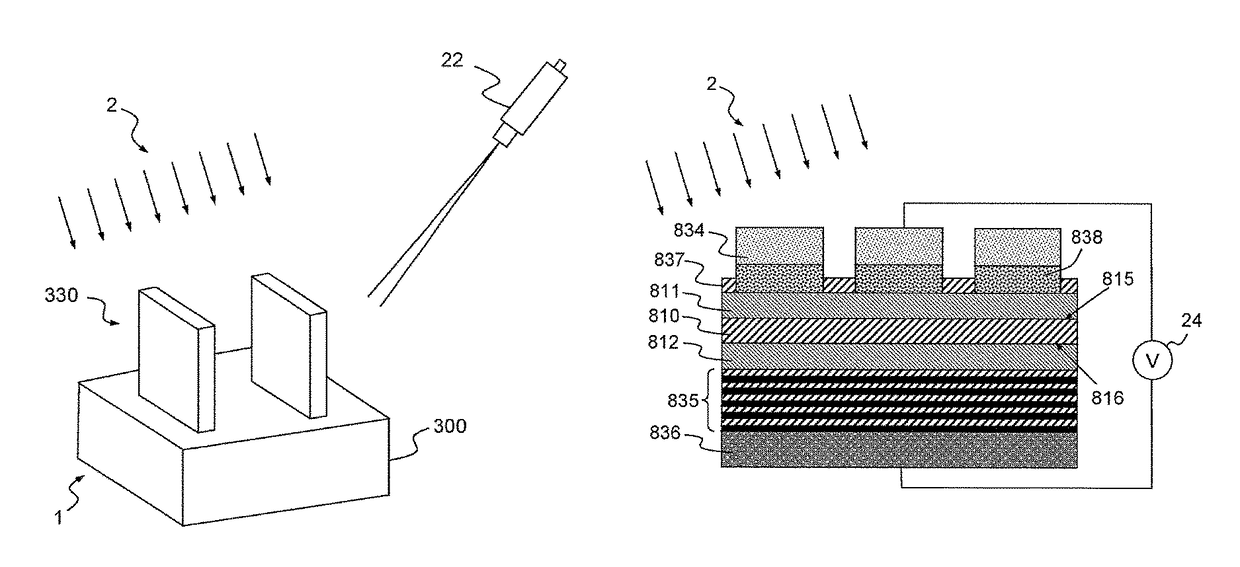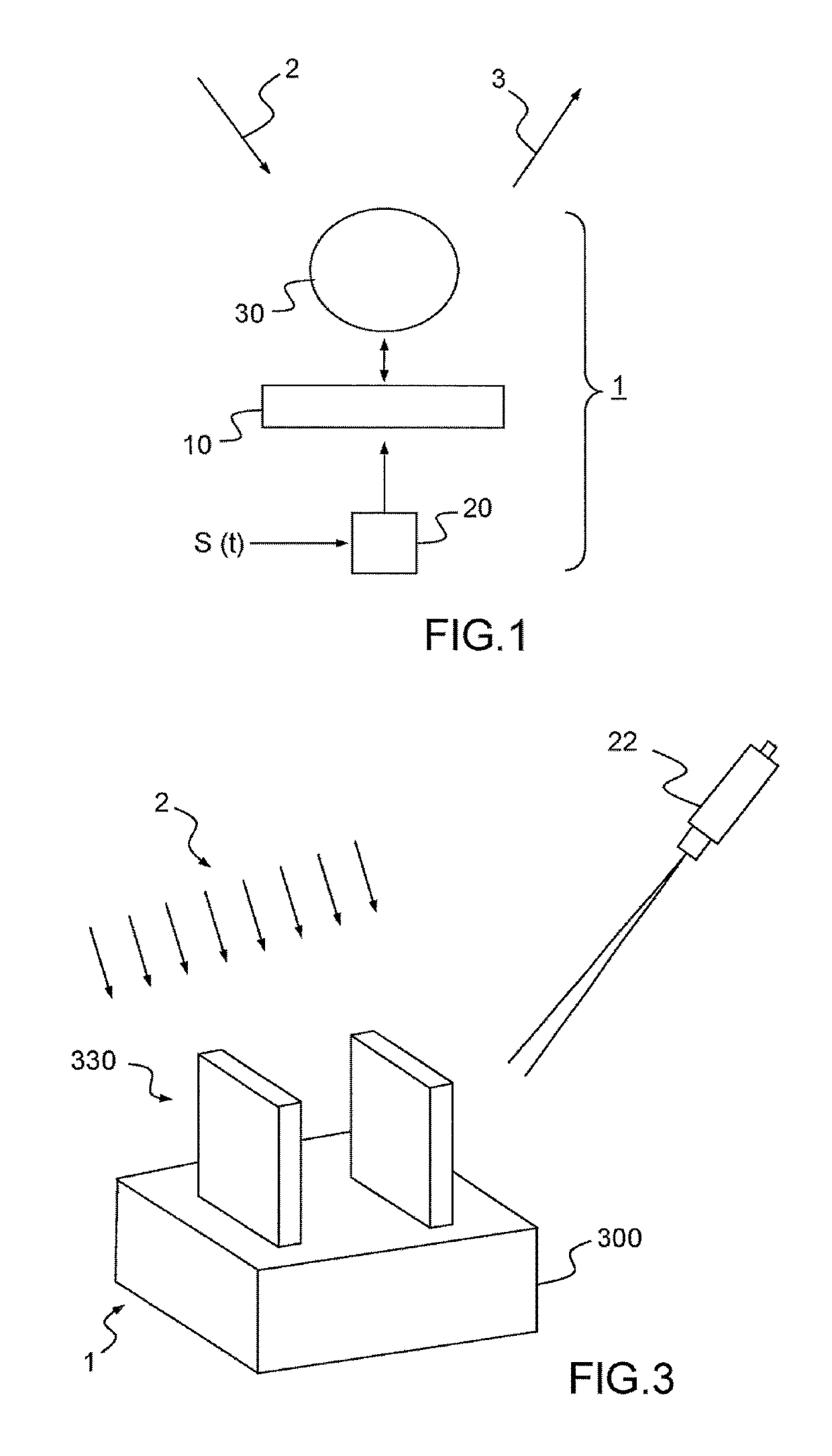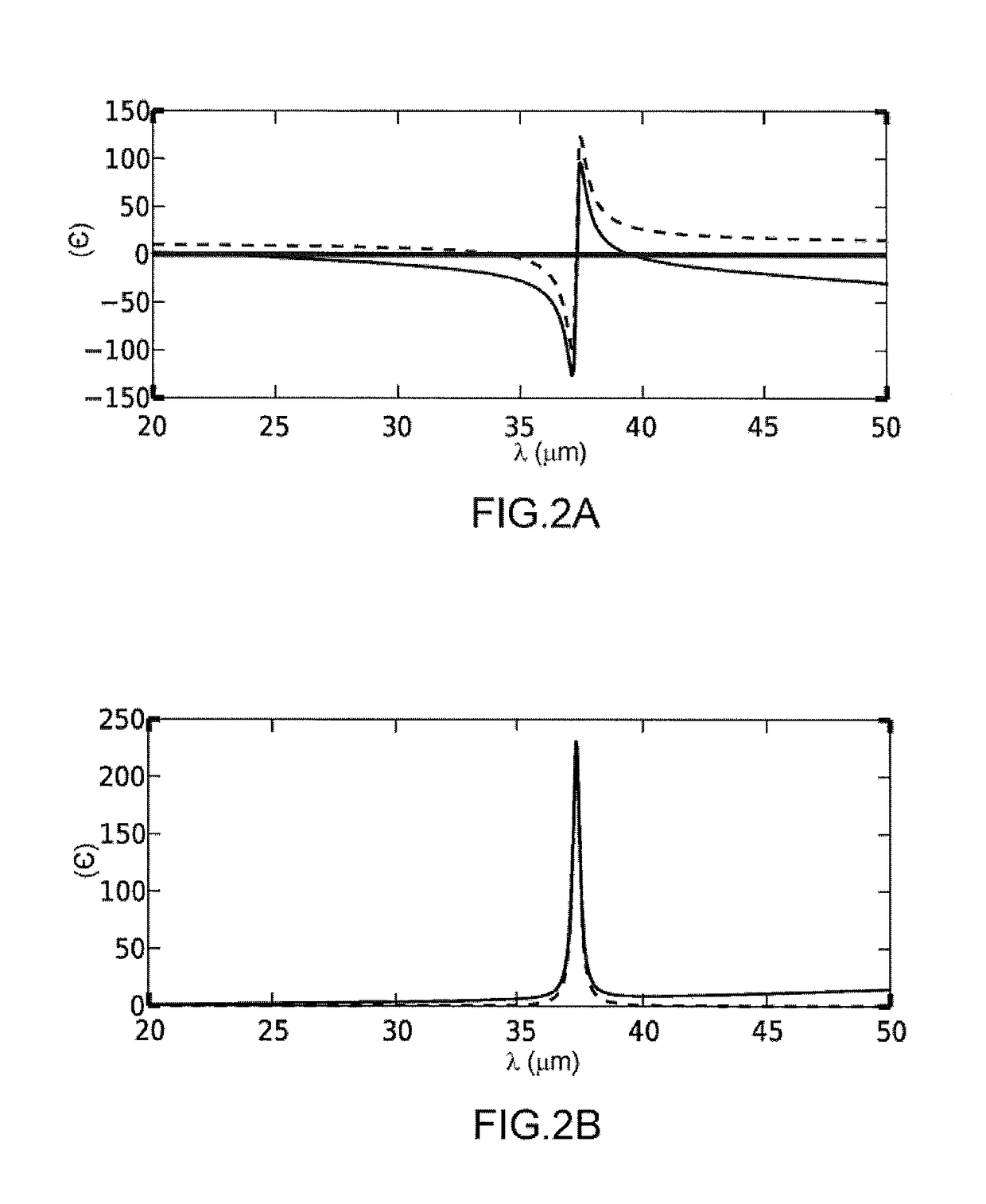Terahertz modulator
a modulator and terahertz technology, applied in the field of terahertz, can solve the problems of ineffective photon working, high working frequency, and inability to effectively work with photons, and achieve the effects of improving modulator efficiency, reducing the confinement of electromagnetic fields, and reducing the cost of operation
- Summary
- Abstract
- Description
- Claims
- Application Information
AI Technical Summary
Benefits of technology
Problems solved by technology
Method used
Image
Examples
first embodiment
[0055]FIGS. 3 and 4A show a first example of a THz modulator according to the In this example, the polar crystal is structured to form at least one crystal blade 330, each blade forming an optical antenna allowing coupling with the incident radiation. An optical antenna is generally understood to be an element capable of transferring the energy of an incident radiation to a more confined volume. Optical nano-antennas have been widely studied and the article by L. Novotny et al. (>, Nature Photonics, Vol 5, February 2011) provides a very good description of them. Here, the blade of polar crystal is sized so as to form a resonator the dimensions of which are adjusted as a function of the desired frequency properties of the coupling. The resonator creates an evanescent field that will allow coupling with the incident radiation allowing the energy of the incident wave to be confined.
[0056]In the example described in FIGS. 3 and 4A, each crystal blade 330 presents the shape of a wall th...
second embodiment
[0081]A modulator such as described in FIG. 8 is fabricated for example according to the following fabrication steps. The layers 835, 812, 810, 811 and 837 are deposited by epitaxy on a substrate of doped GaAs 836. UV lithography is then performed in a photosensitive resin to define the geometry of the optical antennas. The layer 837 is chemically etched and the layers composing the optical antennas (attaching layer 838 and metallic layer 834) are deposited by evaporation.
[0082]The electrical means of control 24 can consist of a voltage source connected to the optical antenna grating 834 (electrically connected to each other) and to the mirror 836. The electrical means of control 24 allow the electron density in the quantum well to be controlled. The application of a negative voltage has the effect of raising the conduction band with respect to the Fermi level of the quantum well, leading to a sharp drop in the density of carriers. The inverse effect is obtained by applying a posit...
PUM
| Property | Measurement | Unit |
|---|---|---|
| distance | aaaaa | aaaaa |
| frequencies | aaaaa | aaaaa |
| frequencies | aaaaa | aaaaa |
Abstract
Description
Claims
Application Information
 Login to View More
Login to View More - R&D
- Intellectual Property
- Life Sciences
- Materials
- Tech Scout
- Unparalleled Data Quality
- Higher Quality Content
- 60% Fewer Hallucinations
Browse by: Latest US Patents, China's latest patents, Technical Efficacy Thesaurus, Application Domain, Technology Topic, Popular Technical Reports.
© 2025 PatSnap. All rights reserved.Legal|Privacy policy|Modern Slavery Act Transparency Statement|Sitemap|About US| Contact US: help@patsnap.com



